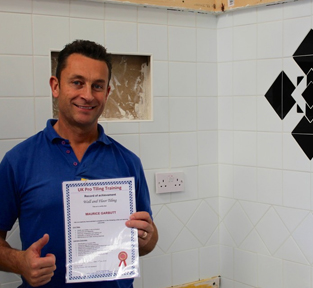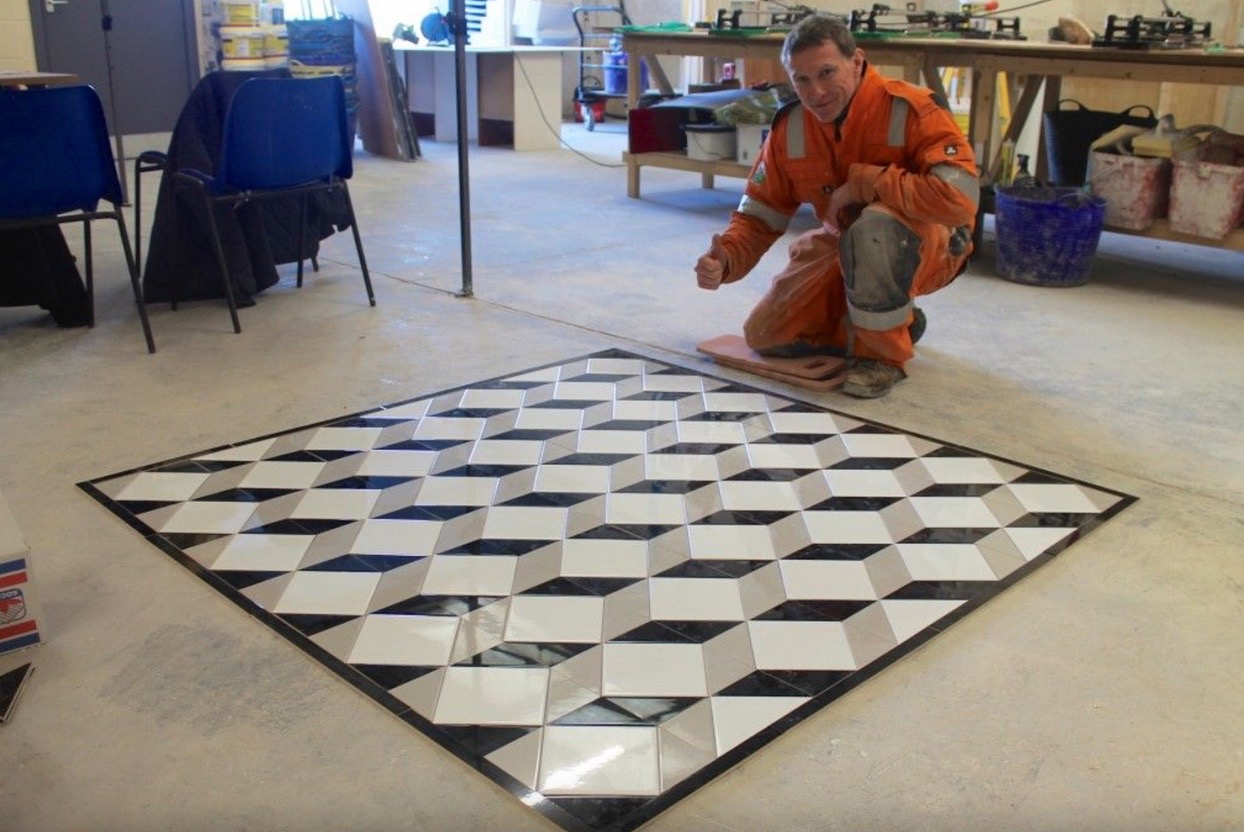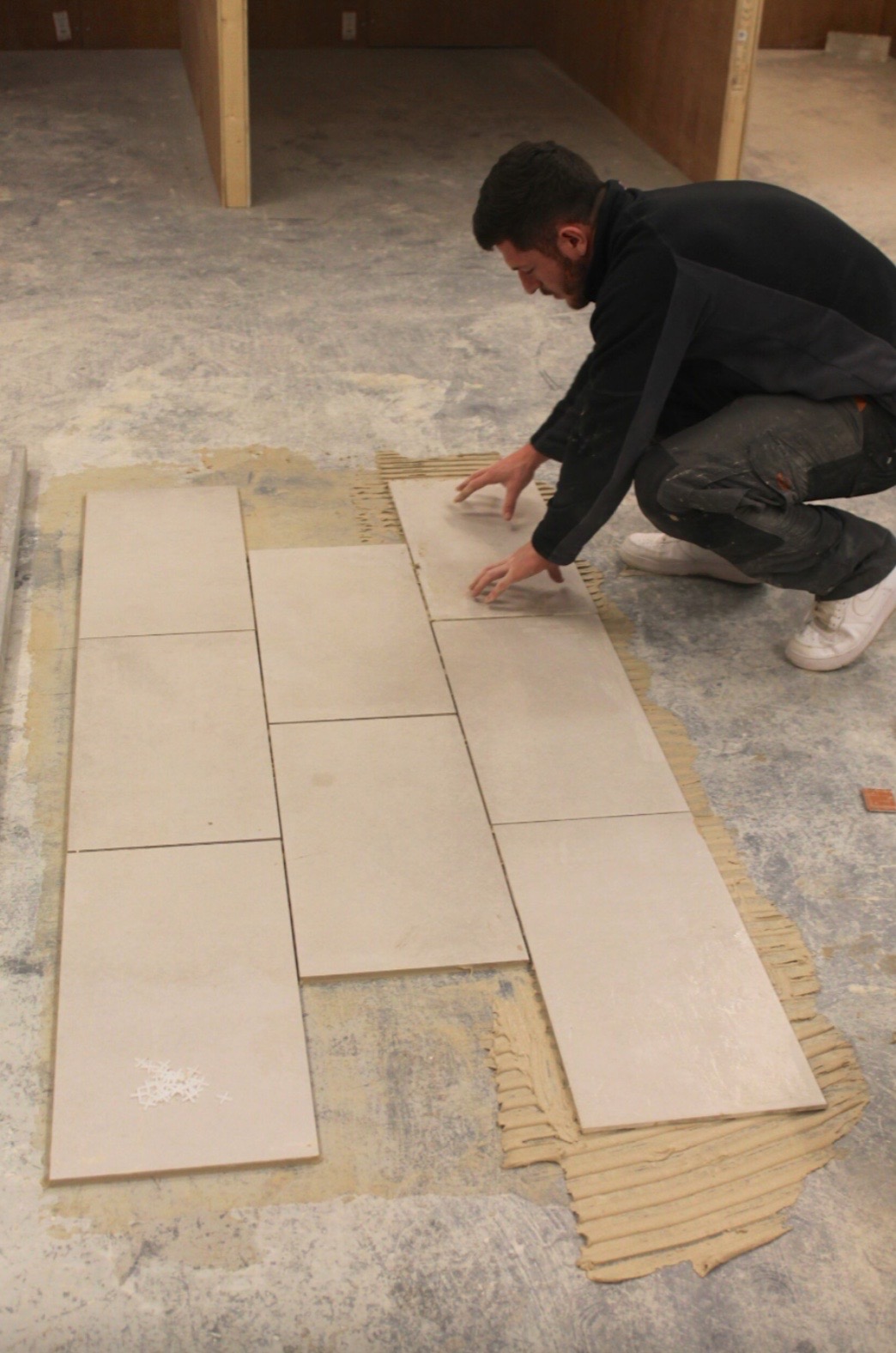How to Become a Tiler: The Ultimate Guide
For many people, the idea of spending the rest of their working lives in front of a computer isn’t appealing. The days can be tedious, and the work can seem repetitive because an office environment isn’t for everyone.
If you prefer working with your hands, you might want to explore learning a trade. Electricians, plumbers and tilers are more in demand than ever, and these skilled professionals make good money.
Whether you plan to join a company or work for yourself, tiling is an exciting and varied career with plenty of opportunities to move up the ladder.
Better still, you don’t need to go to university, and many flexible courses are available, meaning you don’t need to study full time.
What Prospects Do Tilers Have?

There are plenty of opportunities for tilers in the UK. The service will always be in demand due to an increase in new developments across the country.
With more homes being built, there’s a greater demand for tilers to fit kitchens and bathrooms.
Of course, it’s not just new builds that require the services of a tiler. Older properties also need upkeep, and many homeowners choose to renovate rather than move. Tilers that decide to specialise in refurbishments can also look forward to excellent prospects.
According to UK Talent, the average hourly earnings for a tiler is £17 per hour, which is significantly higher than the UK average hourly rate of £13.57. Experienced tilers can exceed £40,000 a year, and the earning potential for tiling businesses is unlimited.
How To Become A Tiler
Now for the important part; how do you become a tiler? Well, it’s not as challenging as you might believe. There are numerous options available, but your route will depend on your age and current qualifications.
Attend College
If you’re still in full-time education, you could consider studying for a tiling-related qualification at college. While this is more suitable for younger individuals, adults can take this route – though you’ll have to attend full time.
The best route to a tiling career through college is to take the Diploma in Wall and Floor Tiling course. However, to get straight onto the Level 2 diploma, you’ll need two GCSEs at grades 9 to 3.
The Level 1 Certificate is an entry path to the diploma, so that’s an option for people who don’t have the necessary GCSEs.
Apprenticeship Scheme
Another option is to join an apprenticeship scheme. These schemes give young people on-the-job training in their chosen trade. Apprenticeships are a great way to learn because you’ll be working with an experienced tiler, earning a wage while you do it.
There are three types of apprenticeship available in England:
Intermediate Level Apprenticeship: Equivalent to five good GCSE passes, this apprenticeship will take around 12 months to complete.
Advanced Level Apprenticeship: If you have two A-Level passes or other relevant qualifications, an advanced apprenticeship is for you. It will take between 18 and 24 months to finish.
Higher Apprenticeship: A Higher Apprenticeship is ideal for people who want to achieve a degree or HNC/HND whilst working. You can expect to spend two to four years completing a higher apprenticeship.
While some apprenticeships are suitable for adults, they often come with low pay and are challenging to find.
Tiling Courses
If the above options aren’t suitable for your needs, don’t worry; you have other options. Intensive tiling courses could give you vital qualifications in just 13 days of training.
The 13-day tiling course is designed to equip you with the skills and certifications you need to become a professional tiler. You can even ask for an NVQ assessor to visit you while working, but the certificates you get from the course will demonstrate your knowledge and help you to secure clients.
Are Tiling Courses Worth It?

Are tiling courses worth it? Yes – if you want to become a tiler. Tiling courses are a great way to switch careers later in life, and many people are making massive changes due to the impact of the pandemic.
A 13-day course is intensive and designed for aspiring pro tilers. However, there are plenty of alternatives for novices or people who want to tackle that home DIY project alone.
We recommend that anyone looking to gain work as a tiler takes our 13-day course because it covers everything, but you can take a shorter course first to decide whether tiling is right for you.
The Advantages Of Becoming A Tiler
There are plenty of advantages to becoming a tiler, spanning further than excellent earning potential. Let’s take a look at them.
Freedom And Flexibility
As a tiler, you have the freedom to work as little or as much as you want. Some people choose to work part-time and can take on small jobs to supplement their employment income, while others work on large projects that will keep them busy for weeks.
You might work with others, or you could work alone on projects, which benefits people who prefer being their boss.
Creativity
A lot of people don’t realise that being a tiler is a creative job. Yes, you’re working with tiles, but you also have the opportunity to be creative with patterns, colours and finishes.
While some projects will be pretty restrictive, other clients might ask you to create a pattern or design an exciting colour scheme. Many tilers work on refurbishment projects for residential and commercial businesses, and it can be very satisfying to see the finished result.
Independence
As a tiler, you’re likely to be self-employed, which means that you have the freedom to work when and where you want. You can take on as many or as few jobs as you like, and there’s no need to ask for permission to take time off.
Final Thoughts
Becoming a professional tiler is more accessible than many think, and there are plenty of opportunities to build a successful business once you qualify.
Whatever you decide, we’re confident you’ll love the convenience of our 13-day tiling course and everything it offers regarding professional growth and development.
Please don’t hesitate to contact us if you’d like to learn more.



